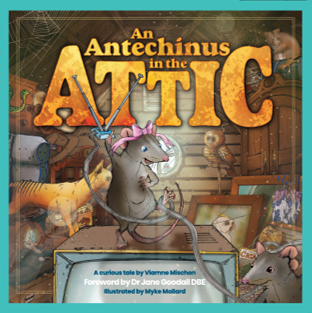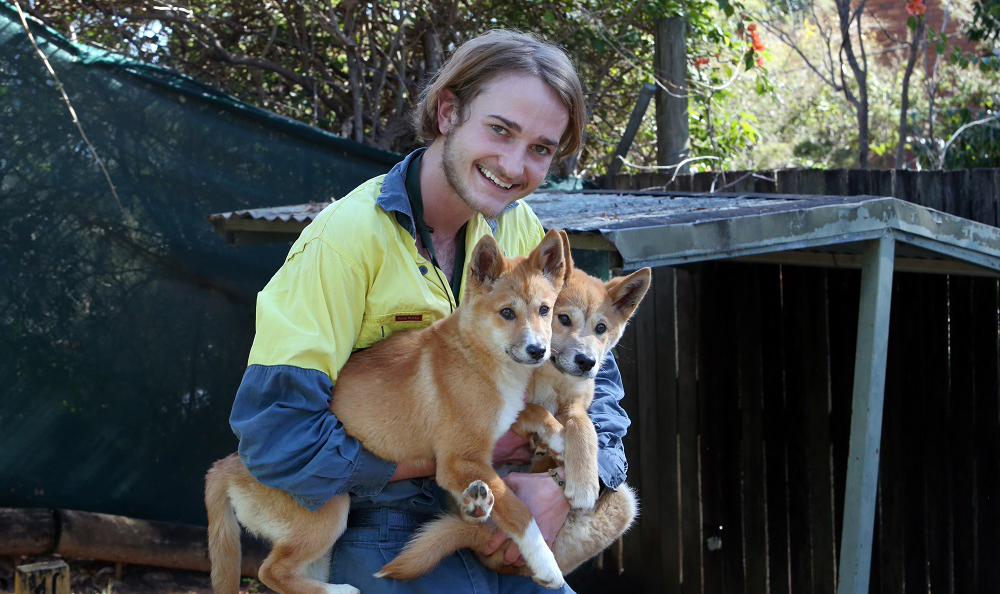This year on National Threatened Species Day, the Ipswich Nature Centre will collaborate with the School Broadcasting Network in partnership with Jane Goodall’s Roots & Shoots Australia to tell the stories of some of the animals from the Ipswich Nature Centre.
Videos about dingoes Lola and Moose as well as Hemu the emu will be broadcast at the launch of children’s book An Antechinus in the Attic with a portion of book sales donated to engage young people and schools through environmental education and conservation programs.
Students from all around Australia will see Ipswich Nature Centre leading hand Darcy Bannah talk about Lola and Moose who are the two resident dingoes at the Ipswich Nature Centre.
Mr Bannah shared interesting facts about the apex predators such as just like humans, they have rotating wrists, they can dislocate their hips and unlike humans, they can turn their heads 180 degrees in any direction.
These are all very useful for when they are hunting and chasing something down a hole.
While dingoes are considered a pest in some parts of Queensland, conservationists are working hard to preserve pure dingo gene pools ensuring there are dingoes in the future.
There are more than 2,000 recorded species of native plants and animals in Ipswich, including numerous rare and threatened species.
National Threatened Species Day is commemorated across the country on 7 September to draw attention to plants, animals and ecosystems that are under threat, and encourage the community to help conserve and protect our natural heritage.
The day also highlights work that is being done by conservationists, researchers, volunteers, and community experts on how we can protect native plants and animals.
Read also:
About National Threatened Species Day
The date of 7 September was chosen in 1996 to commemorate the day each year.
The last remaining Tasmanian tiger, the last known thylacine, died at Hobart Zoo in 1936.
That was 84 years ago. Today some of the main factors for extinction are habitat loss, introduced species and climate change.
Ways you can help
- Attract wildlife to your garden by planting native species which encourages local wildlife.
- Be a responsible pet owner by registering your dog or cat, desexing and keeping them inside the boundary of your property.
- Limit driving your car around vegetated areas at night to allow wildlife to safely cross roads
- Help reduce pollution and waste in your neighbourhood by recycling, composting and minimising the use of plastic bags.
- Conserve water in your garden by using water wise plants and installing a rain-water tank.
To commemorate National Threatened Species Day, Springfield Lakes Nature Care will be holding a spotlight night to observe nocturnal animals, such as possums, swamp wallabies, tawny frog mouths and a family of sugar gliders.
The event will take place on Saturday, 5 September at 5.45pm. Details here.

The book launch for An Antechinus in the Attic featuring video from Ipswich Nature Centre and zoo’s around Australia will be live via Funky Kids Radio Facebook page on 7 September at 1.30pm until 3.30pm and will rebroadcast daily until 12 September.
Schools can sign up online to access free event streaming and free teacher’s resources.


